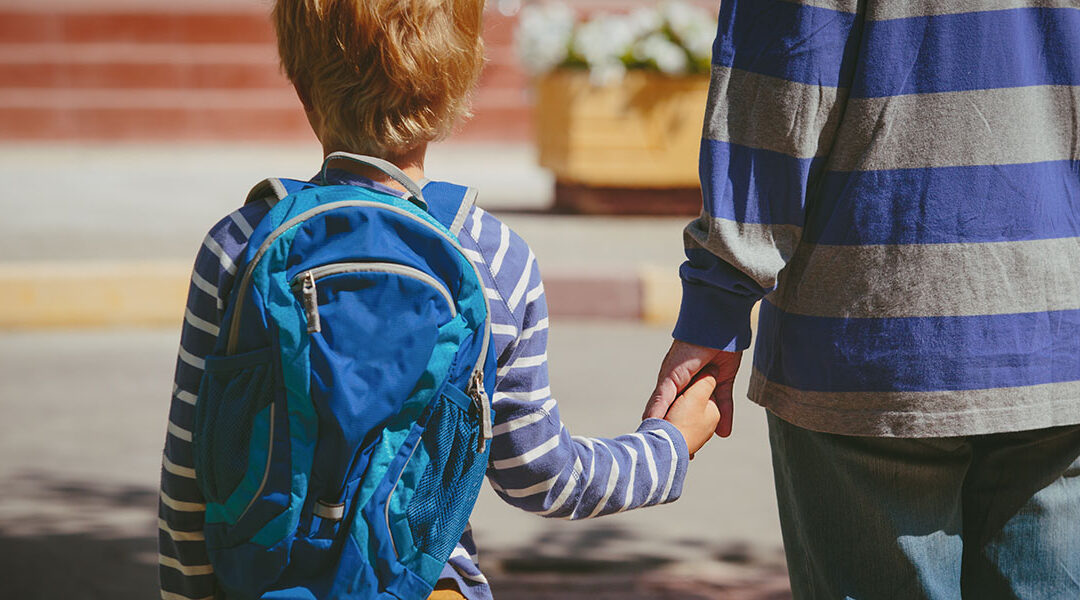As the long summer days are quickly dwindling away, the cool nights reminds us of the coming school year. Some people are eagerly awaiting to be back, while others are dreading another year. Whether you are filled with excitement or dread, it is normal to have a variety of feelings this fall. As a school-based mental health therapist, I have been thinking of ways we can support students and teachers this fall. I mourn with the heart aching news surrounding public schools and the increased mental health concerns children are facing during this time. However, remembering the positive resources and efforts I have seen in the schools makes me optimistic about the year. As I reflect on these thoughts, I want to share insight on supporting one another returning to school.
School is a place of safety for some children. It may provide relief from an abusive or chaotic home, be one of the few place’s children feel noticed or heard, or serve as a place that ensures consistent meals. Teachers and other school staff help create this safe, consistent and exciting place for students. I recently heard the phrase that teachers are hidden mental health professionals and I could not agree more. Teachers are tasked daily with the challenge of not only educating children, but supporting their social, emotional and behavioral development. They are often the first ones to recognize mental health concerns in children and teach healthy ways of managing them.
I remember an exercise one of my favorite elementary teachers used regularly to calm our class and get us ready to learn. She would put her hands in front of her, parallel to the ground, cross her arms, interlock her fingers, and twist her hands close to her chest. As we mirrored her, she then told us to cross our legs and put our tongues on the roof of our mouths. The chatter, giggles and energy in the class slowly subsided. At the time, I do not think I understood the purpose of this exercise, but I remember periodically using this technique to feel calmer.
Fast forward several years, I forgot completely about this exercise until I was learning about a trauma healing therapy called Somatic Experiencing and I saw a trained somatic experiencing therapist do the same exact technique my teacher used daily in our class. They called it a “hook up” and explained how it can help settle our nervous system. Children often come to therapy with coping skills their teachers taught their class that they now use regularly on their own, such as mindfulness techniques, yoga poses, deep breathing exercises or positive self-talk. This is just one small example that makes me believe teachers truly are hidden mental health professionals.
Considering the important role teacher’s play in children’s mental health, keeping an open line of communication with them is important and can make the transition into this school year smoother. It can also be helpful to periodically check-in with your student’s teacher and listen to what they say about your child’s progress.
While school is a safe and happy place for many children, for some, it is far from that. School may be especially tough or scary for children who are bullied, misunderstood or have a learning disability or mental health disorder. Identifying at least one adult they feel comfortable talking to at school can be helpful in a time of crisis or when they need extra support. This does not have to be their current teacher, but could be a lunch cook, building engineer, administrative staff, etc. Additionally, let that person know that your student feels safe with them and ask them if it is okay if they periodically check-in with them.
It is common for students to need additional support at school. According to the National Alliance on Mental Health, one in six children ages 6-17 experience a mental health disorder each year and only about half receive mental health services. Not diagnosing or treating a mental illness can interfere with student’s ability to learn and develop at school. School-based mental health services, such as therapy, can improve mental, emotional and behavior concerns, while eliminating barriers to receiving therapy. As a school-based mental health therapist, I am able to create a consistent meeting schedule with students without families having the burden of transporting their child to an appointment. If a student in your life is struggling with mental, emotional or behavioral concerns, I encourage you to see what resources their school has available.
It is normal to have worries about the upcoming school year. Transitions are tough and can be chaotic. Be patient with yourself and others this fall. I continue to be inspired by the efforts I see from school staff, caregivers and children to create an enjoyable environment for one another. I hope we can find ways to show our school teacher’s appreciation and support this fall. There is no “one size fits all” to having a perfect transition into the school year, but there are steps we can take to make it smoother.
Written By:
Jenny Birkholz, MSW, LGSW, LADC
Individual and Family Therapist
Lakes Center for Youth & Families


Recent Comments